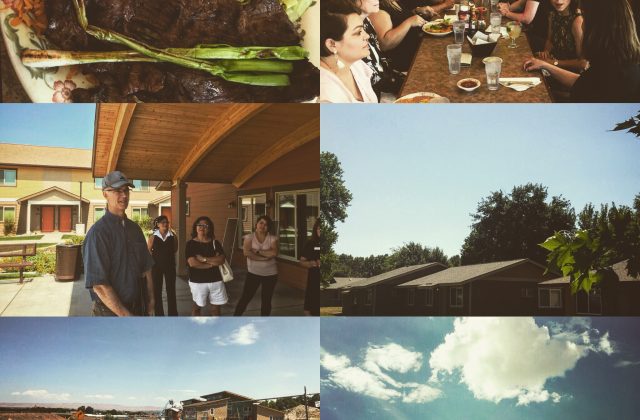Reform on the Road: Great Visit to Granger
Last week I had the pleasure of touring several Farmworker housing projects in Granger. The tour was lead by Marty Miller and Cristina Ruiz of the Office of Rural and Farmworker Housing and included the Mayor of Granger, State Senator Judy Warnick, and people from the Washington Policy Center, Center for Latino Farmers, the Grant County Hospital District, Washington State Tree Fruit Association, and the Homeless Network of Yakima County. We co-hosted the tour and lunch with the Center for Latino Leadership. a statewide group working on improving public engagement within the Latino community. The visit was intended to get an up close view of housing issues impacting rural Washington and some housing solutions that work.
We visited a range of projects run by non-profits and by the Yakima County Housing Authority. Housing is scarce in Yakima County. As I’ve pointed out, Seattle has a 3 percent vacancy rate while Yakima County has a 1 percent vacancy rate. The waiting lists for housing are long, and most people are waiting in smaller units doubling or tripling up and making long commutes. But there are some innovative solutions. For example, the Yakima County Housing Authority is piloting a program to use seasonal housing in the off season for housing for homeless people. The pilot program started in late 2016, takes advantage of vacancies in the Cosecha project in Granger.
Yakima Neighborhood Health Services’ Sunnyside office and the Northwest Community Action Center in Toppenish are partnering with the Housing Authority to connect families with the new housing opportunity. Neighborhood Health will fill six units, and NCAC will fill the other four, all with Lower Valley families.
The two agencies will pay $15 a day to rent each unit, or $450 for 30 days, the same price farm workers pay for the units during the summer. Total, that means Neighborhood Health will be paying $2,700 a month for its units and NCAC will pay $1,800.
Eight of the units have eight beds apiece, and two have six beds. The cluster of houses also has laundry facilities, and Krueger says he already has an on-site manager in place to work with families, do weekly inspections and keep everything running smoothly.
Setting up this win-win solution required agencies at the state and federal level to waive limits and requirements to allow the local solution. That’s what some might call “deregulation” and it highlights the point that sometimes well intended rules can constrain local innovation to address problems. Everyone I talked with agreed that more housing is needed in rural parts of our state; but the funds aren’t reaching those who have the greatest needs. Waiving rules is a start, but more funds for building housing are important and can be spent much more efficiently. The Mother Joseph Villa project in Granger cost $10 million for 50 units, or about $200,000 per unit, far less than higher cost units in Seattle. The Mother Joseph project might have even been less expensive and built more units if there were less transaction costs for the tax credits, loans, and Housing Trust Fund dollars.
I asked whether water was an issue. It is. Getting water access adds lots of costs. That’s why I wrote an opinion piece in the Yakima Valley Herald calling for a solution to the problems created by the Hirst decision, a ruling against local property owners and builders to access water by building new wells. A solution was found that dealt with most of that problem, but allowing Housing Trust Fund dollars to pay for water infrastructure, not just units, might make those units more affordable, especially if a Farmworker Housing Authority could borrow against those funds using bonding authority.
The take away from the trip for me was we still have a lot more to learn. But I think it is true that more flexibility to allow local solutions, fewer strings and rules for using state resources, and more investment in infrastructure would help address housing scarcity and high prices in rural communities. I’m looking forward to my next trip.


